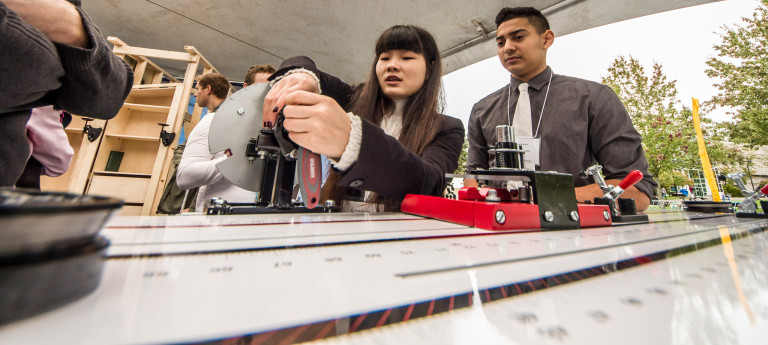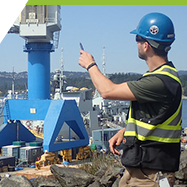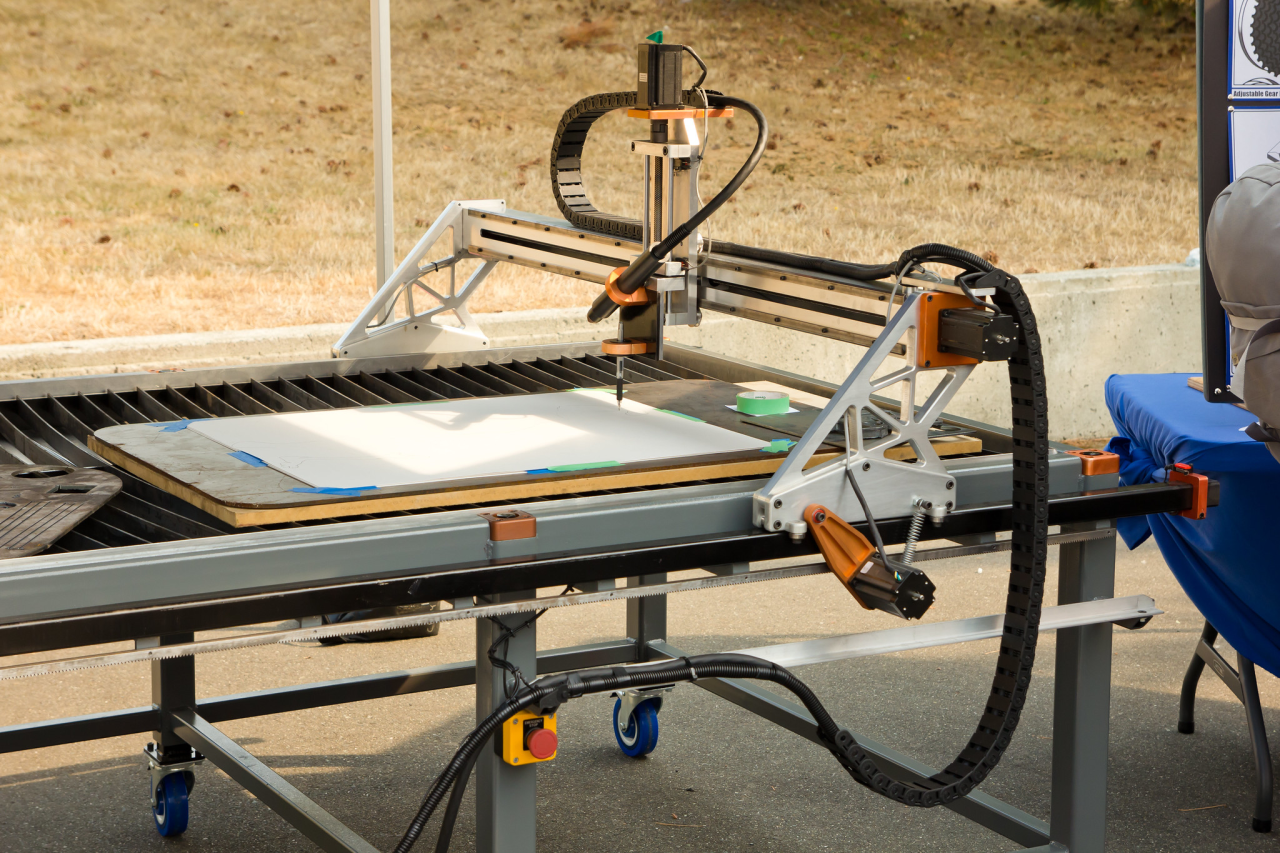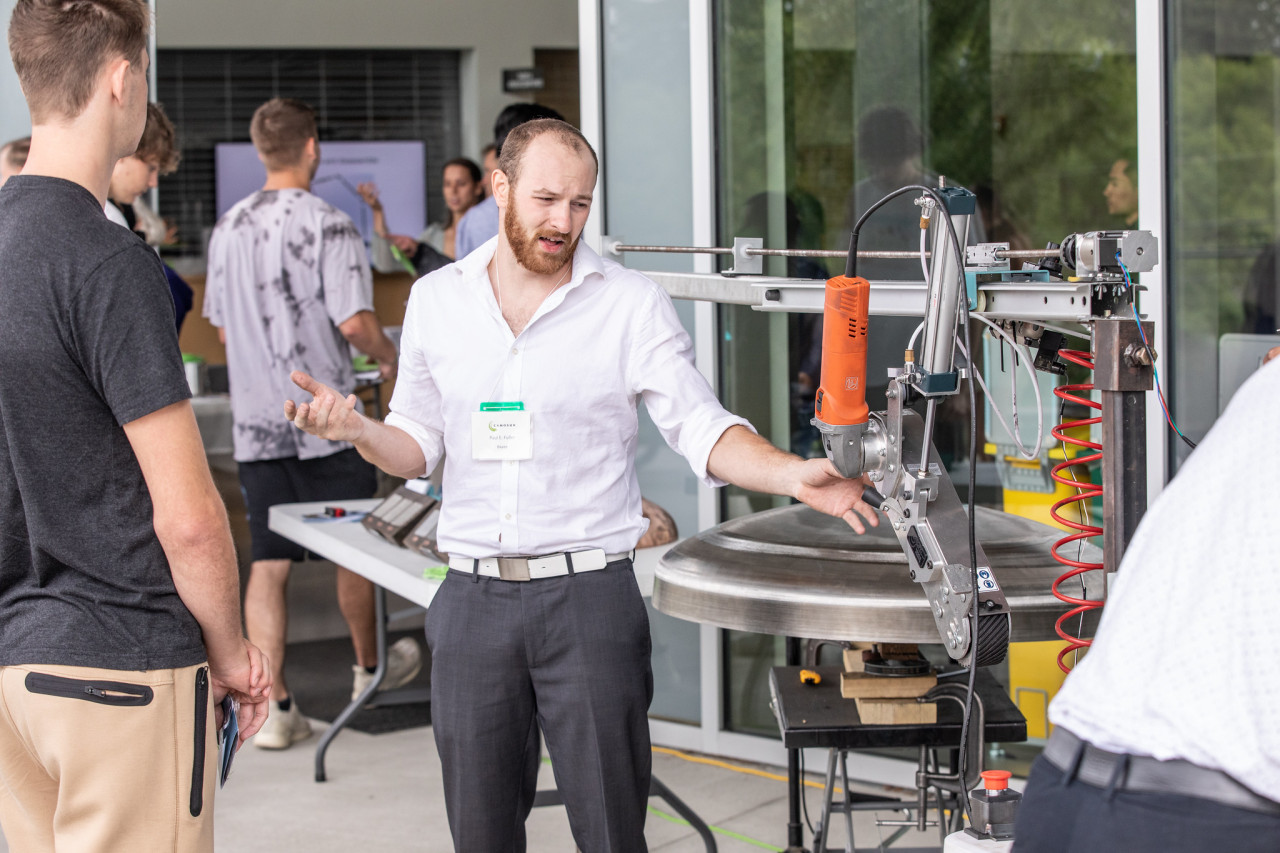Program at a glance
Credential
Advanced Diploma
Work experience
Co-op / internship
Study options
Full-time
Open to International
Yes
Area of study
Length
8 months
High demand
Get ready for your P.Eng.
Start in September
The Mechanical Engineering Bridge program provides access to the third year of Mechanical Engineering at the University of British Columbia Vancouver (UBC V) or University of British Columbia Okanagan (UBC O).

Mechanical engineers design and build machines and other products, such as robots, spacecraft, automobiles, artificial limbs, amusement park rides, elevators, and manufacturing equipment. If something moves or uses energy, mechanical engineering was probably involved in its design or production.
The Mechanical Engineering Bridge to the University of British Columbia program consists of two academic terms, beginning in September and finishing at the end of May for entry into the third year of engineering at the University of British Columbia in September.
Combining theory and technology
The engineering bridge programs share many common courses, which have been developed in consultation and cooperation with UBC and UVic. The engineering bridge programs are rigorous and you should expect to dedicate yourself to your studies throughout your time in the program.
An Internship work term is optional for this program.
The only program of its kind
The engineering bridge programs are unique and recognized across Canada as an excellent transition from a technology diploma to an Engineering degree (UVic) or Applied Science degree (UBC).
Although the bridge programs are designed for graduates of technology diplomas delivered through Camosun, all graduates from accredited Canadian Technology Accreditation Board (CTAB) programs are welcome to apply.
Information Sessions
Find out more about upcoming networking and information sessions.
In demand
Industry professionals and educators agree—the combination of a technology diploma and engineering degree creates the most desirable type of engineer.
You will gain both hands-on experience with practical applied skills and an excellent knowledge of advanced engineering courses.

Co-ops and internships
Alternate between full-time studies and full-time paid work, better preparing you to embark on your career after graduation.
What you'll learn
Current students wanting information about your program, go to student planning in myCamosun.
Program outline
For more details, including courses, please see the program outline in the academic calendar.
What to expect
Our engineering bridge programs are comprised of two academic terms. Each term, you’ll attend 14 weeks of class followed by an exam period. Classes are scheduled for 25-28 hours per week. Homework commitments vary per student but amount to about three to four hours per day including weekends.
If a number of years have passed since your graduation, it is strongly advised that you retake math courses in preparation for returning to school. A comprehensive review of the math topics that Camosun students have covered in their technology programs has been created by instructor Raymond Lai for the bridge program.
The Mechanical Engineering Bridge to the University of British Columbia program starts with the Fall semester and ends after the Winter semester. The optional internship work term is offered May through August. After successful completion, you’ll transfer into the first academic term of third-year engineering at UBC (Vancouver or Okanagan) in September.
UBC Engineering Bridge Information Booklet
Tuition and fees
Effective from September 1, 2024, to August 31, 2025
Estimated tuition
Tuition estimates are for the entire program.
Mechanical Engineering Bridge to UBC, Advanced Diploma
$5,835 (domestic)
$16,432 (international)
Mechanical Engineering Bridge to UBC, Advanced Diploma, Internship designation
$6,654 (domestic)
$18,123 (international)
Domestic tuition fees vary depending on the individual course fees for the classes you select.
For International students visit: International Tuition & Fees.
Student fees
In addition to tuition estimates, student fees are calculated based on your enrolment. Refer to: Student Fees.
Financial assistance
You may need to find more than one source of funding to help pay for your education and living costs while attending college. Check out sources of money you don't need to pay back as well as those that need to be repaid.
Application deadline
- Next intake: Fall 2025
- Application period: Sept. 15, 2024 – March 1, 2025
- Document deadline: March 15, 2025
Admission requirements
This program is demanding and requires a high level of commitment. The admission process is designed to identify the students most likely to succeed at the University. The number of applicants meeting the minimum GPA standard for admission may be greater than the number of seats in the program. This may mean a higher GPA is used to determine admission eligibility. All of: And one of: Note: Admission Selection Process Stage One Stage Two
When you apply you will need to submit proof that you meet the program admission requirements listed above. Where a letter grade is specified, you must have proof of that grade or higher.
For more details, including courses, please see the program outline in the Academic Calendar: Loading...
Ready to get started?
Applications will open in the fall and close in March.
Check our current program availability.
Missing admission requirements?
You may be able to take an assessment or upgrade with us.
Need help applying?
Find out more on How to Apply or speak to an Admissions Advisor.
Contact us
If you have admissions questions contact us today!
If you have questions about what you can expect to learn in your technology bridge classes contact engbridge@camosun.ca
Faculty/staff profile

Peter Burrage
Program Leader - Engineering Bridge, Instructor - Civil Engineering
burrage@camosun.ca
250–370–4443
Technologies Centre
Full bio

Learn more
For more details, including courses, please see the program outline in the academic calendar.
Contact information
Engineering Bridge
Peter Burrage
Admissions questions:
